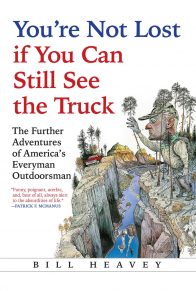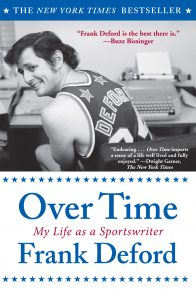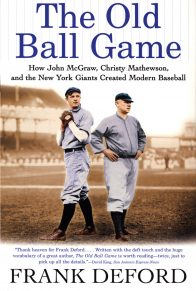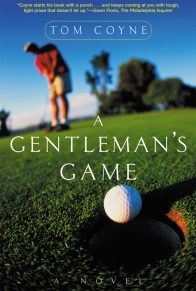“
Head coach Brian Johnson stands in the middle of the field, which is composed largely of dirt as fine and dry as cocoa powder. A black Nike floppy hat protects Brian’s head from the 90-degree sun. Prescription sunglasses tint his eyes blue. Sweat trickles down his face, soaking his T-shirt and dotting one of the six pairs of Nike sneakers he owns. He’s trying to look imposing, like a leader, but as he watches the boys run a lap around the park he starts to smile. He’s been waiting for this day.
When Brian arrived at the field two hours ago, he brought props. Off-season runs to the Home Depot netted him yards of PVC pipe, elbow joints, glue, and a hacksaw, all of which he used to assemble an obstacle course of impressive complexity. Ten yards of rope netting wait to be skipped. A limbo bar hovering three feet above the grass needs to be ducked under. A dozen orange cones form a zigzag for the players to slalom through as if skiing.
During the day Brian delivers bolts, screws, and other machine parts to warehouses around Miami. Today he took the day off and loaded his work van with the obstacle course and the cones. Beasley cashed in a vacation day too. Coach Pete, who also skipped work, stands near a concrete light post, chilling in the narrow beam of shade the post provides. The brim of his black Liberty City baseball visor is pulled so low he has to crane his neck to make eye contact with the three other assistants as they roll in.
All the coaches, like all the players, are black. Coach Ed is a towering scarecrow with long, thin teeth stained by cigarettes. He’ll oversee the offensive line. Lanky Coach Chico will assist Coach Pete, who is his girlfriend’s father. Coach Tubbs has the cornerbacks. During the day Tubbs mows grass for the City of Miami Beach, his eyes blind to the tourists on Ocean Drive, his mower a monotonous whir as he daydreams about his evenings at Hadley Park.
“I just love football” Tubbs says after he slaps skin with Pete and Brian. “I was too short to play, you know, so I coach.”
The first boys arrive back from their laps, breathing heavily. Sweat drips down smooth faces all frozen and serious.
“Run all the way in. Put your hands on your head. Run it all the way in. Everywhere we go we run,” says Coach Ed. “Got to get in shape to play football. Ninety-five-pound football.”
The boys stand in the line of shade from the light post, resting their hands atop their heads as they cool down. No one wears helmets or pads this first day. Instead they wear shorts and cleats or maybe tennis shoes as oversized as pontoon boats. Most have pulled their T-shirts up to their armpits to cool their lean stomachs. They are skinny, and tiny. The description “pencil neck” is more accurate than it is insulting. Brian’s eleven-year-old daughter, Sha-nise, sprays water into the boys’ open mouths.
“Boot camp” is what Brian calls the first week of practice. Every day for five straight days the routine is the same. After stretching in a lazy semicircle the boys run wind sprints, then crabs, which entail scurrying twenty yards backward on their hands and feet. At the PVC-pipe obstacle course they run through the netting, trying not to trip. Speed is deemphasized.
“Boy, once you get good at it then you can go fast. It’s not about going fast. Take your time,” Coach Chico counsels a player entangled in rope. “Run with your head up.” The boys who trip run the drill again. There is no yelling. Some kids show superior form or surprising speed–”good hands and good hops,” as Tubbs says.
“Head up,” says Beasley to a boy watching his feet navigate the netting. “You’ve got to see that linebacker coming at you. Good job, little man.”
After an hour of conditioning, the Warriors break into groups. Assistant coach Chico schools the linebackers on the proper three-point stance: feet behind the buttocks, chest parallel to the ground, right hand touching the turf for balance.
“You’ve got to get used to the cadence,” Chico yells. He blows into a silver whistle. ‘ready!” The linebackers drop into a squat. ‘set!” They lean onto their fingers. “Hike!” Each boy explodes forward, running a few feet before stopping with awkward expressions. Do we stop here? Do we keep going? Coach Chico asks them to wrap their hands around his waist as if he were an oncoming ball carrier. He’s not asking for tackles, or for the boys to use force. Still, Chico is six-foot-one and 205 pounds. The thought of tackling him–most of the boys can hope only to wrap themselves around one of his thighs–reduces them to giggles.
“Get mean!” barks Coach Pete in his Army drill instructor voice. “Wipe that smile off your face. Get ready to hurt somebody. Get mean! Come on, get mean!”
Ten feet away, Coach Beasley introduces the offense to the different positions in his complicated Georgia Southern system. Five boys form an offensive line. Antwane, the probable quarterback, stands behind them. When asked to stare at the butt cheeks of the players in front of him, Antwane turns toward a teammate and giggles.
“He said butt cheeks!”
* * *
In 1929, store owners in Philadelphia banded to solve a common problem: “Teenagers with nothing to do were causing them great losses in acts of violence,” according to Pop Warner league history. The founder of the league, Joseph Tomlin, was an ambitious stockbrocker whose job prospects on Wall Street were crippled by the Great Depression.
Although the game took off in Pennsylvania, selling youth football to America proved a challenge. Parents feared their boys would be injured playing such a violent sport.
“Articles published by doctors, educators and others [stated] that the game should be outlawed,” according to the official history. At a symposium on sports for youth, held in 1953 and attended by delegates from the AMA, the American Academy of Pediatrics, and others, Tomlin called for professional support of youth football teams. “His presentation is interrupted by boos. At the close of the conference, a vote is taken for a ban on “kid football” and is supported 43–1. Tomlin being the lone dissenting vote.”
Tomlin was not deterred. He continued brainstorming ways to promote his unwanted sport. One of his friends suggested what became the first-ever “Kiddie Bowl,” played in a snowstorm in front of 2,000 spectators. A team backed by a Philadelphia restaurant faced off against a team from New York, Sinatra’s Cyclones, sponsored by the singer. The game became an annual tradition. Within a decade, the league grew from a thousand teams nationwide to more than twice that number. Forty years later, the number of teams has tripled. Pop Warner is the largest football league in America.
For all its growth–especially in the last decade–Pop Warner remains a somewhat disorganized operation. There are no Pop Warner leagues in football-crazy Ohio, for instance. The national office takes great pains to point out Pop Warner’s emphasis on scholastics, from the recognition of academic all-Americans to the awarding of college scholarships. Yet, for the 350,000 kids in Pop Warner, only $30,000 in scholarships are awarded annually.
Even in Miami, rival leagues vie for youth football talent. But Pop Warner is the only league that offers the possibility of playing for a national championship at Disney World. For that reason, Pop Warner is far and away Miami’s dominant youth football league, home to the best players and the toughest competition.
Copyright ” 2003 by Robert Andrew Powell. Reprinted with permission from Grove Atlantic, Inc. All rights reserved.













